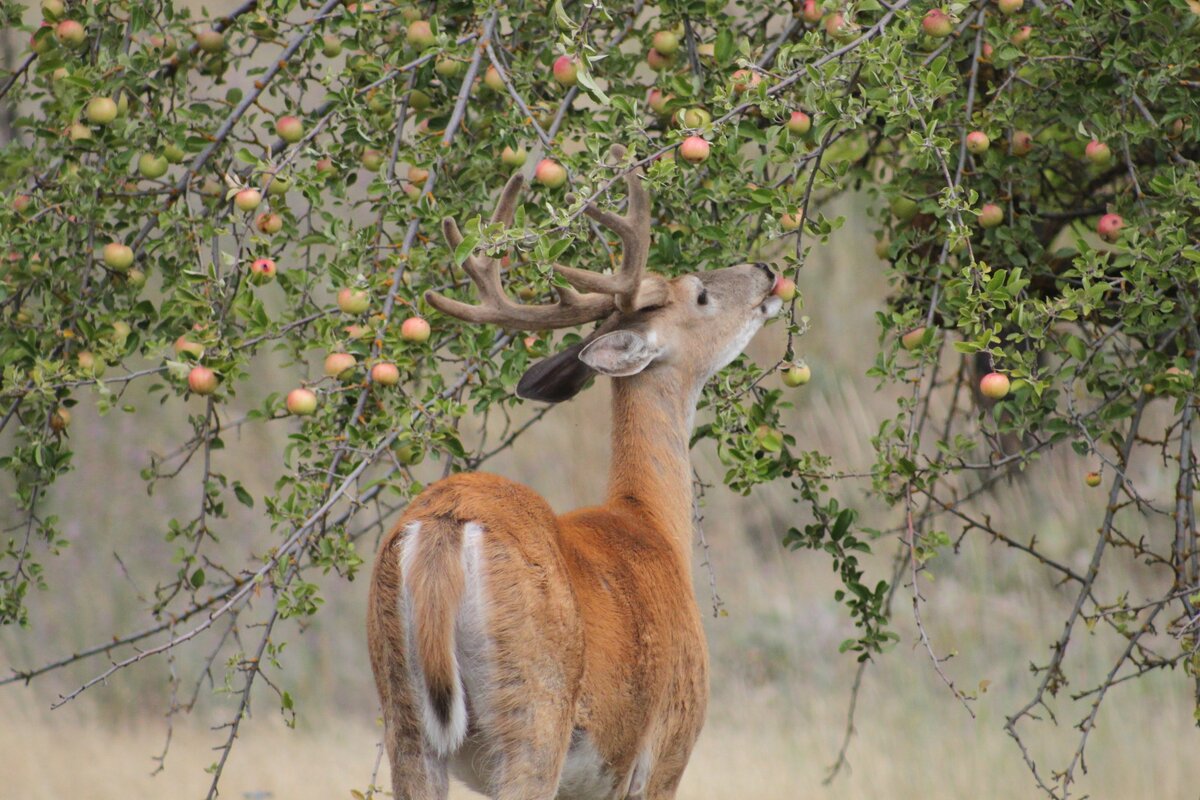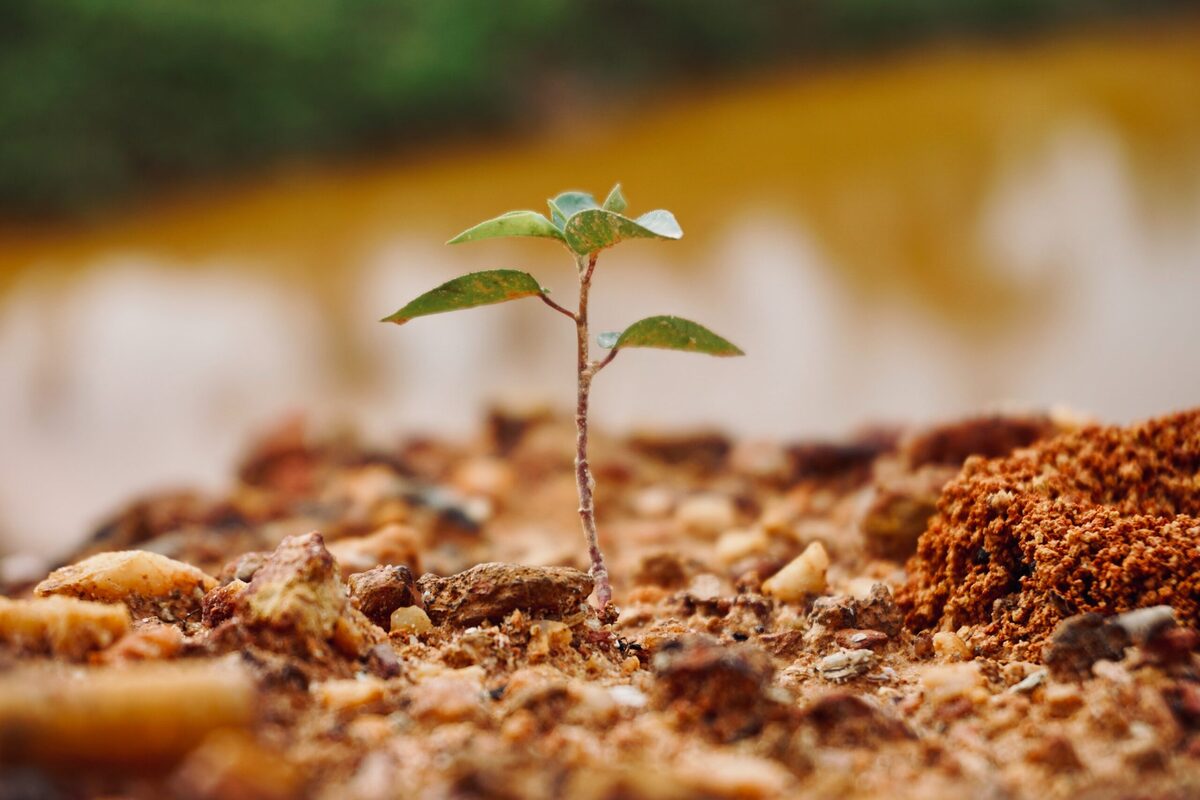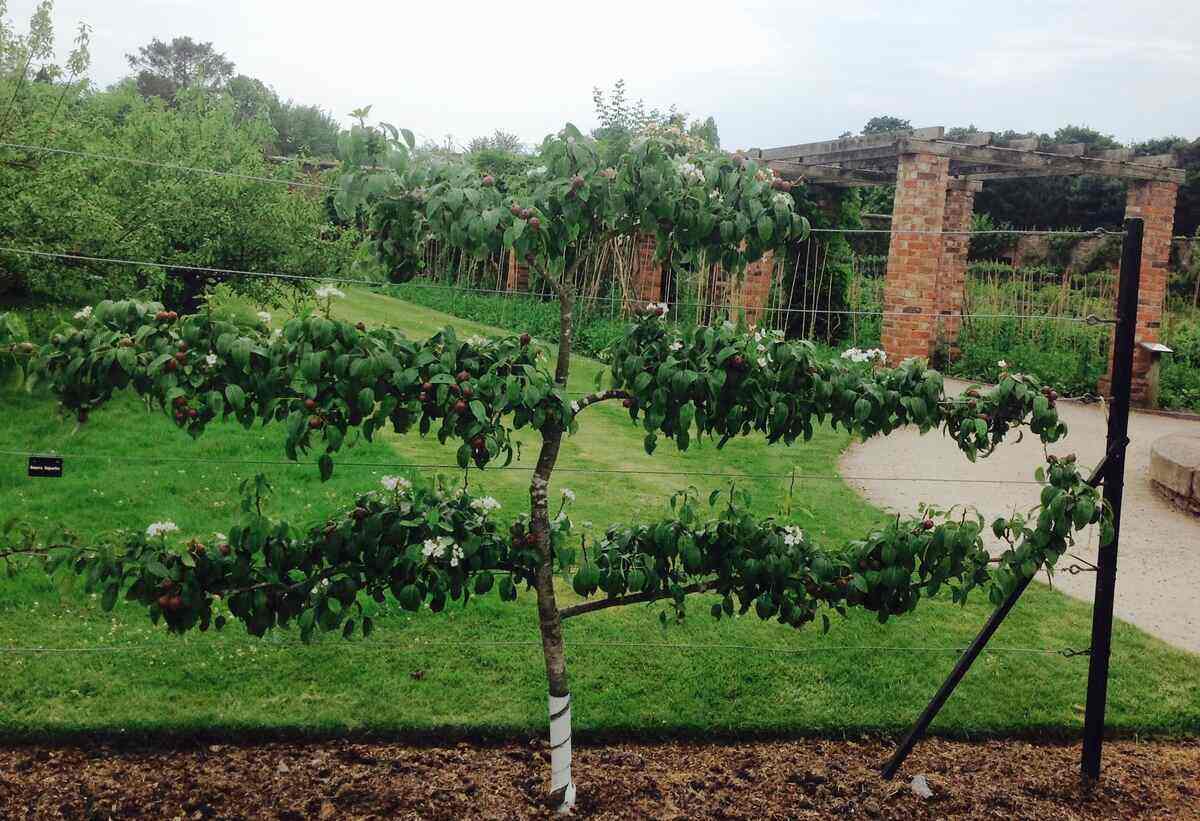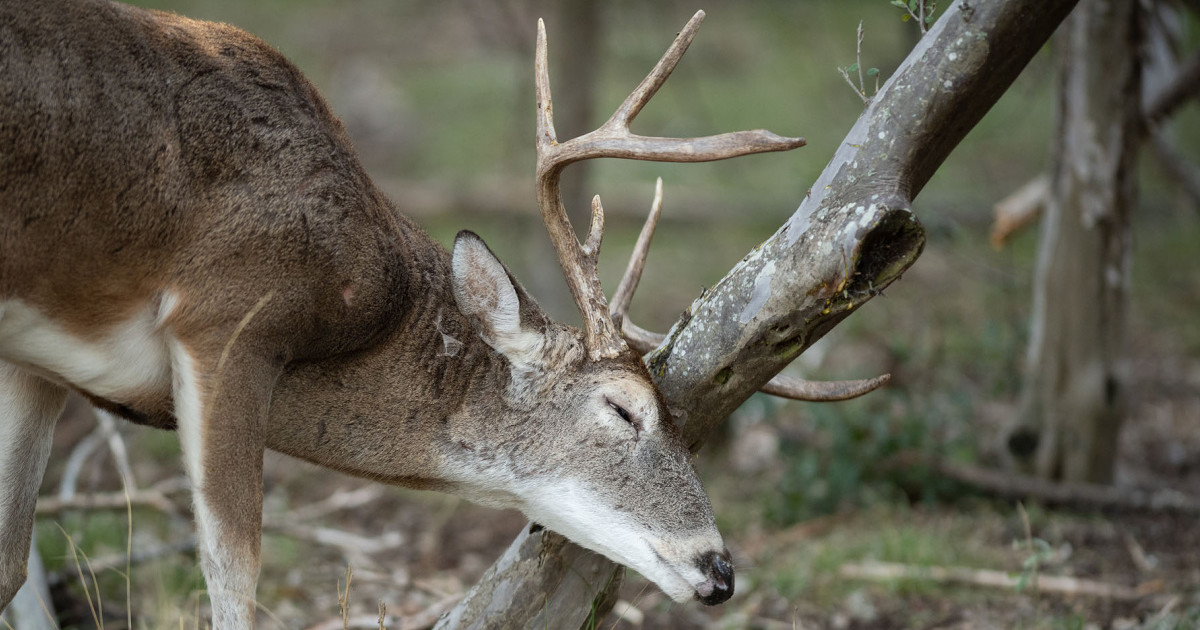Home>Gardening Techniques>Plant Care>How To Protect Fruit Trees From Deer


Plant Care
How To Protect Fruit Trees From Deer
Published: November 3, 2023
Learn effective plant care techniques to protect your fruit trees from deer damage. Find out how to keep deer away from your precious plants and ensure a bountiful harvest.
(Many of the links in this article redirect to a specific reviewed product. Your purchase of these products through affiliate links helps to generate commission for Chicagolandgardening.com, at no extra cost. Learn more)
Table of Contents
- Introduction
- Understanding the Threat of Deer to Fruit Trees
- Assessing Different Types of Deer Deterrents
- Physical Barriers and Fencing Options
- Using Repellents and Chemical Deterrents
- Implementing Sound and Visual Techniques
- Utilizing Scents and Taste Deterrents
- Attracting Natural Predators
- Regular Tree Maintenance Practices
- Conclusion
Introduction
Welcome to our comprehensive guide on how to protect your fruit trees from deer. If you have a beautiful fruit orchard or garden, you know the joy and satisfaction of watching your trees grow and produce luscious, ripe fruits. However, deer can quickly turn your dream landscape into a buffet, causing extensive damage to your beloved trees.
Deer can be a major threat to fruit trees as they see them as a source of food. They not only eat the leaves and tender shoots but also rub their antlers against the trunks, causing considerable damage. This can weaken the tree’s structure and leave it vulnerable to disease and pests.
While it’s impossible to completely eliminate deer from your property, there are a variety of effective methods and deterrents you can employ to protect your fruit trees. In this guide, we will explore different strategies, ranging from physical barriers and fencing options to the use of repellents, sound and visual techniques, and even attracting natural predators.
By implementing these techniques, you can create a landscape that not only preserves the health and beauty of your fruit trees but also helps to coexist peacefully with the deer population in your area.
Keep in mind that each property is unique and the effectiveness of these methods may vary. It’s important to assess your specific situation and consider the local deer population’s habits and behaviors. Experimentation may be necessary to find the most effective combination of deterrents for your fruit trees.
So, if you are tired of waking up to find your fruit trees stripped of their leaves and fruits, let’s dive into the numerous strategies you can use to protect your beloved fruit trees from the persistent grazing of deer.
Understanding the Threat of Deer to Fruit Trees
Deer pose a significant threat to fruit trees due to their feeding habits and behaviors. Understanding the impact they can have on your trees is crucial in developing an effective protection plan.
One of the primary concerns when it comes to deer and fruit trees is their voracious appetite. These animals can quickly decimate your fruit trees by consuming the leaves, buds, and young shoots. As they continue to feed, their persistence can ultimately lead to stunted growth and even death of the tree.
In addition to feeding on various parts of the tree, deer are known to cause damage by rubbing their antlers against the trunk. This behavior is particularly prevalent during the rutting season when males mark their territory. Unfortunately, this rubbing can cause severe wounds to the bark, which not only weakens the tree but also provides an entry point for pests and diseases.
Furthermore, deer carry ticks, which can present an additional threat to fruit trees. Ticks can transmit diseases to the trees, causing further decline in their health and productivity. It’s essential to prevent deer from accessing your trees to minimize the risk of tick infestation.
It’s worth noting that deer tend to prefer certain tree species over others. Apple, pear, cherry, and plum trees are particularly attractive to deer due to the delicious fruits they produce. However, it’s not just the fruit-bearing trees that are at risk. Deer will also target young saplings, ornamental trees, and even established trees if other food sources are scarce.
Deer populations have been on the rise in many areas, largely due to factors such as habitat loss and limited natural predators. As a result, the need to protect fruit trees from these animals has become even more crucial.
By understanding the threat that deer pose to your fruit trees, you can proactively implement the appropriate measures to safeguard your trees and ensure their health and productivity for years to come.
Assessing Different Types of Deer Deterrents
When it comes to protecting your fruit trees from deer, there are various types of deterrents available. Understanding the different options and their effectiveness is key to choosing the most suitable approach for your specific situation.
1. Physical Barriers and Fencing Options: Physical barriers are among the most effective methods for keeping deer away from your fruit trees. Installing tall fencing around your orchard or individual trees can create a barrier that is difficult for deer to penetrate. Metal or polypropylene deer fencing, with a height of at least 8 to 10 feet, can be highly effective in preventing deer from accessing your trees. Alternatively, you can consider building a sturdy fence using wood or other materials. Remember to bury the fence at least 12 inches below ground to prevent deer from burrowing underneath.
2. Repellents and Chemical Deterrents: There are various types of repellents available that can deter deer from approaching your fruit trees. These repellents can be categorized into two main types: scent-based and taste-based. Scent-based repellents use strong odors that deer find unpleasant, such as garlic or predator urine. Taste-based repellents, on the other hand, make the tree or fruits taste bitter or unpleasant, deterring deer from biting into them. It’s important to reapply these repellents regularly, especially after rainfall, to ensure continued effectiveness.
3. Sound and Visual Techniques: Deer are easily startled by sudden movements and loud noises. Utilizing sound and visual deterrents can help deter them from your fruit trees. Motion-activated sprinklers, reflective tape, or hanging CDs can startle the deer and make them associate your trees with a negative experience. Noise-making devices, such as wind chimes or even a radio playing at low volume, can also help keep deer at bay.
4. Scents and Taste Deterrents: Certain scents and tastes can be effective in deterring deer. Planting aromatic herbs like lavender or rosemary around your fruit trees can mask the scent of the trees and make them less appealing to deer. Similarly, using repellent sprays that contain natural scents like clove or mint can help keep deer away. Additionally, there are taste deterrent sprays available that can be applied directly to the tree or fruit, making them unappetizing to deer.
5. Attracting Natural Predators: Another approach to deer deterrence is to attract their natural predators, such as coyotes or foxes, to your property. Creating habitats that are conducive to these predators, like providing shelter and suitable food sources, can encourage them to frequent your area. However, this method may not be practical or feasible for everyone, depending on the location and local regulations.
Remember that the effectiveness of these deterrents may vary depending on factors such as the deer population in your area and their familiarity with these methods. It’s often recommended to use a combination of deterrents to maximize their effectiveness and increase the chances of successfully protecting your fruit trees.
Physical Barriers and Fencing Options
Physical barriers and fencing are highly effective methods for protecting your fruit trees from deer. By creating a physical barrier, you can prevent deer from accessing your trees and causing damage. There are various options available when it comes to physical barriers and fencing, each with its own benefits and considerations.
1. Metal Deer Fencing: One of the most popular and durable options is metal deer fencing. This type of fencing is typically made of high-strength steel or polypropylene mesh and is specifically designed to keep deer out. It is available in various heights, with a minimum height of 8 to 10 feet being recommended to effectively deter deer. Metal deer fencing is sturdy and long-lasting, providing a reliable barrier against deer. However, it can be more expensive compared to other options, and the visibility of the fence may affect the aesthetic appeal of your landscape.
2. Wooden Fencing: Wooden fencing can also be an effective option for protecting your fruit trees. It provides a solid barrier that deer won’t be able to easily jump over. When choosing wooden fencing, opt for sturdy and durable materials like cedar or pressure-treated wood. Make sure the fence is at least 8 feet high to effectively deter deer. While wooden fencing may require regular maintenance, it offers the advantage of being customizable to fit the aesthetic of your property.
3. Electric Fencing: Electric fencing is another option that can be highly effective in deterring deer. This type of fencing delivers a mild electric shock to deer upon contact, creating an unpleasant experience and training them to avoid the area. Electric fences can be constructed using polywire or electric netting, with multiple strands of wire or netting at appropriate heights. It’s important to follow the manufacturer’s instructions for proper installation and maintenance of the electric fence.
4. Tree Wraps and Trunk Guards: To protect your fruit trees from deer rubbing their antlers against the trunk, consider using tree wraps or trunk guards. Tree wraps are made of sturdy materials like burlap or plastic mesh and are wrapped around the trunk. They act as a physical barrier, preventing deer from directly rubbing against the tree. Trunk guards are rigid structures made of plastic or metal that encircle the base of the tree, providing protection against antler damage.
5. Burying Fencing: When installing any type of fencing, consider burying the bottom portion of the fence. Deer are known to try burrowing under fences, so burying at least 12 inches of the fence below ground can help prevent them from gaining access to your trees. This extra measure can further secure your fruit trees against deer damage.
Regardless of the type of physical barrier or fencing you choose, it’s important to regularly inspect and maintain it. Monitor for any signs of damage or areas where deer can potentially breach the barrier. Regularly check for loose wires, damaged mesh, or gaps that may need to be repaired to ensure the effectiveness of your chosen deterrent.
Remember that while physical barriers and fencing can be highly effective, they may not be suitable for all situations or budgets. Consider your specific needs, the size of your orchard or garden, and your aesthetic preferences when deciding which option is best for protecting your fruit trees from deer.
Using Repellents and Chemical Deterrents
Repellents and chemical deterrents are effective tools in deterring deer from your fruit trees. These products work by either emitting strong odors or unpleasant tastes that discourage deer from feeding on your trees. There are several options to choose from when it comes to using repellents and chemical deterrents.
1. Scent-based Repellents: Scent-based repellents use strong odors that deer find unpleasant, making them less likely to approach your fruit trees. These repellents often contain natural substances such as garlic, predator urine, or essential oils that mimic the scent of predators. When applying scent-based repellents, it’s important to follow the manufacturer’s instructions. Typically, you’ll need to spray or hang repellent-soaked materials in and around your fruit trees. Reapplication may be necessary after rain or as the scent diminishes over time.
2. Taste-based Repellents: Taste-based repellents make the tree or fruit taste bitter or unpleasant to deer, discouraging them from feeding. These repellents are typically sprayed directly onto the tree’s foliage or fruits. Taste-based repellents often consist of natural ingredients such as hot pepper, soap, or vinegar. It’s essential to follow the instructions and adhere to the recommended application rates, as excessive application may affect the taste of the fruits.
3. Homemade DIY Repellents: If you prefer a more natural and budget-friendly approach, you can create your own homemade deer repellents. Common DIY recipes include using a mixture of eggs, water, and hot sauce as a taste-based repellent, or creating sachets of strong-smelling herbs like lavender or crushed garlic to deter deer with scent. These homemade repellents may not provide as long-lasting or consistent results as commercial products, but they can be a cost-effective option for some gardeners.
4. Weather-resistant Repellents: Consider using weather-resistant repellents that can withstand rainfall and other environmental conditions. This is particularly important for scent-based repellents that may lose their effectiveness when washed away by rain. Look for repellents specifically formulated to remain effective even in wet conditions, ensuring consistent protection for your fruit trees.
5. Rotation of Repellents: To prevent deer from becoming accustomed to specific repellents, consider rotating between different products or alternating between scent-based and taste-based repellents. By changing up the repellents periodically, you can maintain their effectiveness and keep deer guessing, making it less likely for them to ignore or adapt to a single deterrent.
When using repellents and chemical deterrents, it’s important to remember to prioritize the safety of your fruit trees and the environment. Choose products that are approved for use on edible plants, and avoid using harmful chemicals that may be toxic or leave residues on the fruits. Always read and follow the labels and instructions provided by the manufacturer to ensure safe and effective use.
It’s important to note that repellents and chemical deterrents may need to be applied regularly, especially after rainfall or as the scent or taste diminishes over time. Regular monitoring and reapplication are essential to maintain the deterrent effect and keep deer away from your valuable fruit trees.
Implementing Sound and Visual Techniques
Sound and visual techniques can be effective in deterring deer from your fruit trees by creating a sense of fear or discomfort. These methods exploit the deer’s sensitivity to sudden movements and loud noises, encouraging them to stay away. Implementing sound and visual techniques can help protect your fruit trees without relying on physical barriers or chemical deterrents.
1. Motion-Activated Devices: Motion-activated devices are an excellent choice for scaring off deer. Sprinklers equipped with motion sensors can be strategically placed around your fruit trees. When a deer enters the designated area, the sensors detect its movement and trigger a burst of water, startling the deer and causing it to flee. The sudden spray of water mimics the presence of a predator, training the deer to associate your trees with a negative experience.
2. Reflective Materials: Deer can be startled by bright, reflective materials that create flashes of light. Hanging CDs, tin foil, or aluminum strips around your fruit trees can create reflective surfaces that deter deer. The movement and reflections produced by these materials can create an unpredictable and alarming environment for the deer, making them think twice before approaching your trees.
3. Noise-Making Devices: Noise-making devices like wind chimes or radios can be strategically placed near your fruit trees to create a deterrent effect. The subtle sounds from wind chimes can be irritating to deer, while radios playing at low volume can mimic human activity and create the perception of a presence. These noise-making devices can help create a consistent soundscape that discourages deer from getting too close.
4. Scarecrows and Decoys: Traditional scarecrows and decoys can serve as visual deterrents for deer. The presence of a human-like figure or a replica of a natural predator can intimidate deer and make them think twice about approaching your fruit trees. Place scarecrows or decoys strategically around your orchard or garden to create a sense of unease and keep deer at a distance.
5. Flashing Lights: Flashing lights can startle deer and make them feel threatened. Solar-powered or battery-operated lights that flash sporadically can be placed near your fruit trees to create a visual effect that discourages deer from coming closer. The intermittent flashes of light mimic the presence of predators or human activity, creating an environment that deer want to avoid.
Remember that sound and visual techniques are most effective when they are unpredictable. Vary the location, timing, and duration of these deterrents to prevent deer from becoming accustomed to them. Regularly inspect and maintain motion-activated devices, noise-making devices, and reflective materials to ensure they continue to function properly.
It’s important to note that sound and visual techniques may not provide complete protection, especially if deer populations are high or if other food sources are limited. Consider combining these methods with other deterrents, such as fencing or repellents, for a more comprehensive approach to protecting your fruit trees from deer damage.
By implementing sound and visual techniques, you can create an environment that is unwelcoming to deer, helping to preserve the health and productivity of your precious fruit trees.
Utilizing Scents and Taste Deterrents
Scents and taste deterrents can play a crucial role in deterring deer from feeding on your fruit trees. By utilizing certain smells and flavors that deer find unpleasant, you can effectively discourage them from approaching and damaging your trees. Incorporating scents and taste deterrents into your deer protection strategy can help safeguard your valuable fruit trees.
1. Aromatic Plants: Planting aromatic herbs and flowers around your fruit trees can help mask the scent of the trees and make them less appealing to deer. Plants like lavender, rosemary, and thyme are known to have strong scents that deer find disagreeable. By interplanting these aromatic plants, you can create a natural barrier and reduce the attractiveness of your fruit trees to deer.
2. Scent Repellents: Scent-based repellents can be an effective tool in deer deterrence. Numerous commercially available repellents use natural scents that mimic the smell of predators or other substances that deer find unpleasant. These repellents can be sprayed directly on the trees or placed in strategic locations around your orchard or garden. Regular application, especially after rain or as the scent fades over time, is vital to ensure continuous protection.
3. Taste Deterrents: Taste deterrents are another method to discourage deer from feeding on your fruit trees. These deterrents typically contain bitter or unpleasant-tasting substances that are safe for the trees and the environment. Taste deterrents can be sprayed directly onto the foliage or fruits of your trees, making them unappetizing to deer. Regular application and reapplication are necessary, especially after rainfall or as the deterrent wears off over time.
4. Hot Pepper Spray: Hot pepper spray is a commonly used homemade taste deterrent. You can create your own by mixing hot pepper flakes or powder with water and a small amount of dish soap. The spiciness of the pepper will deter deer from feeding on your fruit trees. Remember to wear gloves and avoid contact with your eyes or face when handling hot peppers or preparing the spray.
5. Homemade Scent Deterrents: You can also make homemade scent deterrents to protect your fruit trees. Crushed garlic, strong-smelling soap, or even human hair can be effective in deterring deer. These deterrents can be placed in mesh bags or hung near your trees, emitting odors that deer find repulsive. Keep in mind that the effectiveness of homemade deterrents may vary, and regular reapplication is necessary to maintain their effectiveness.
When using scents and taste deterrents, it’s important to consider the safety of your fruit trees, the environment, and your own health. Choose deterrents that are safe for edible plants and avoid using harmful chemicals or substances that may leave residues on the fruits. Always read and follow the instructions provided by the manufacturer or recipe guidelines to ensure safe and effective use.
Utilizing scents and taste deterrents can help protect your fruit trees from deer damage by creating an environment that deer find unappealing. By incorporating these methods into your deer protection plan, you can increase the chances of successfully safeguarding your trees and preserving the health and productivity of your orchard or garden.
Attracting Natural Predators
One natural and eco-friendly approach to deterring deer from your fruit trees is by attracting their natural predators. By creating conditions that are favorable to these predators, you can encourage their presence in your area, which can help keep deer population in check and minimize damage to your trees. Attracting natural predators can be an effective, long-term solution for deer control.
1. Provide Shelter: Natural predators, such as coyotes, foxes, and birds of prey, need proper shelter to establish their habitat. Creating brush piles, woodpiles, or planting dense shrubs and tall grasses can offer a safe haven for these predators. These areas provide cover and protection from harsh weather, making your property more attractive to them.
2. Food Sources: To attract natural predators, ensure that there is an ample supply of food available. Planting native wildflowers, shrubs, and grasses can attract small mammals and insects, which, in turn, will draw predators to your property. Additionally, creating a diverse ecosystem with a variety of plants will provide a more appealing environment for these predators to hunt and thrive.
3. Water Sources: Natural predators require a consistent water source to survive. Creating water features, such as ponds or small water basins, can attract predators to your property. Ensure that the water is easily accessible and maintained throughout the year, as a reliable water source will increase the chances of predators staying and establishing their territory near your fruit trees.
4. Nesting Sites: Birds of prey are effective predators of small mammals, including deer fawns. Installing nesting boxes or platforms can encourage raptors, like owls and hawks, to nest on your property. These birds are highly beneficial in controlling deer populations as they actively hunt and prey on young deer. Properly designed nesting structures and platforms can provide suitable nesting sites, increasing the likelihood of them becoming regular visitors to your property.
5. Minimize Disturbances: Predators are more likely to establish their territory and patrol an area with minimal disturbances. Minimize human presence and avoid frequent disruptions to the habitat you have created. By limiting disturbances, you create a more appealing environment for natural predators, increasing the chances of them effectively controlling the deer population around your fruit trees.
It’s important to note that attracting natural predators may not provide immediate results, and it may not be feasible in all situations, especially in urban or highly populated areas. Additionally, attracting predators can be a complex task that requires careful consideration of local regulations and the potential impact on other wildlife species. Before attempting to attract predators, research the native predators in your area and consult with local wildlife experts or organizations for guidance.
While attracting natural predators alone may not completely eliminate deer damage to your fruit trees, it can be an effective natural solution that works in conjunction with other deterrents and management strategies. By creating conditions favorable to natural predators, you promote a balanced ecosystem and enhance the overall health and resilience of your orchard or garden.
Regular Tree Maintenance Practices
Regular maintenance of your fruit trees is essential not only for their overall health and productivity but also in deterring deer. By implementing proper tree care practices, you can make your trees less vulnerable to deer damage and ensure their long-term success. Here are some important tree maintenance practices to consider:
1. Pruning: Pruning your fruit trees serves multiple purposes when it comes to deer deterrence. By removing lower branches, you can raise the canopy and make it more difficult for deer to reach the tender shoots and leaves. Additionally, pruning helps maintain the overall health of the tree, promoting strong growth and reducing the attractiveness of your trees to deer.
2. Mulching: Applying a layer of organic mulch around the base of your fruit trees provides numerous benefits. Not only does mulching help retain moisture in the soil and suppress weed growth, but it can also act as a deterrent for deer. The scent and texture of the mulch can make it less appealing for deer to approach your trees, reducing the likelihood of browsing.
3. Tree Guards: Tree guards can provide an added layer of protection against deer. These guards are physical barriers placed around the trunk of the tree to prevent deer from rubbing their antlers against it. Tree guards can be made of sturdy materials like plastic or metal and should be tall enough to cover a significant portion of the trunk.
4. Tree Repairs: Regularly inspect your fruit trees for any signs of damage caused by deer. If you notice any wounds or bark stripping, it’s important to address them promptly. Clean and disinfect the affected areas and apply a tree wound dressing or paint to help the tree heal and minimize the risk of disease or pest infestation.
5. Tree Health: Maintaining the overall health of your fruit trees is crucial in making them less attractive to deer. Ensure your trees are receiving adequate sunlight, water, and nutrients. Implement a regular fertilization regimen and monitor for signs of pests or diseases. A healthy tree is more resilient and can better withstand deer browsing or antler rubbing.
6. Tree Diversity: Consider incorporating tree diversity in your orchard or garden. Planting a variety of tree species can help reduce the impact of deer damage. Deer may have preferences for certain fruits or tree species, so diversifying your orchard can make it less appealing for them to focus solely on your fruit trees.
7. Seasonal Monitoring: Stay vigilant and monitor deer activity throughout the seasons. Deer behavior can change depending on factors such as food availability and mating season. Regularly assess deer populations and their browsing activity on your property. This information can help you adjust your deer deterrent strategies accordingly.
By incorporating regular tree maintenance practices into your routine, you not only promote the health and productivity of your fruit trees but also reduce their attractiveness to deer. These practices, combined with other deer deterrent methods, can help protect your trees and preserve their beauty and productivity for years to come.
Conclusion
Protecting your fruit trees from deer requires a comprehensive approach that combines different strategies and techniques. Understanding the threat that deer pose to your trees is the first step in developing an effective protection plan. Assessing the various types of deer deterrents available, such as physical barriers, repellents, and sound and visual techniques, allows you to choose the most suitable methods for your specific situation.
Implementing physical barriers and fencing options can create a reliable barrier to prevent deer from accessing your trees. Repellents and chemical deterrents, whether scent-based or taste-based, can make your fruit trees unappealing to deer. Utilizing sound and visual techniques, such as motion-activated devices, reflective materials, and noise-making devices, can startle and deter deer. Additionally, scents and taste deterrents can make your trees less attractive to them.
Attracting natural predators, like coyotes, foxes, and birds of prey, can be a long-term solution in controlling the deer population around your fruit trees. Creating suitable habitats, providing food and water sources, and minimizing disturbances can attract and encourage the presence of these predators.
Regular tree maintenance practices, including pruning, mulching, and tree repairs, are crucial in keeping your trees healthy and resilient against deer damage. Monitoring deer activity and adjusting your strategies accordingly are essential in maintaining effective deer deterrence.
By incorporating these strategies and techniques, you can strike a balance between protecting your fruit trees from deer and coexisting harmoniously with the local wildlife. Experimentation and adapting your approach based on your specific circumstances may be necessary to find the most effective combination of deterrents for your fruit trees.
Remember, protecting your fruit trees from deer is an ongoing effort. Be patient, persistent, and proactive in maintaining your chosen strategies. By doing so, you can enjoy the beauty and bounty of your fruit trees while keeping deer at bay.










